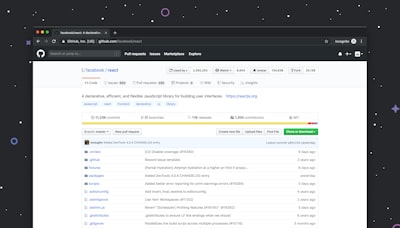Redux, a robust state management tool, is widely used in building scalable and complex applications with JavaScript. Due to its high learning curve, grasping Redux’s full potential may seem daunting. However, in this tutorial, we aim to tackle Redux in-depth, covering not only its fundamental concepts but also diving into its more advanced use cases.
Exploring Redux Thunk
One of the first steps in enhancing your Redux journey is incorporating middleware into your applications. A star player when discussing Redux middleware is Redux Thunk. Redux Thunk is effectively used for handling asynchronous actions in Redux.
function incrementAsync() {
return function (dispatch) {
setTimeout(function () {
// Yay! Can invoke sync or async actions with `dispatch`
dispatch(increment());
}, 1000);
};
}
This code snippet was sourced from the Redux Thunk GitHub page, showing how you can implement asynchronous actions sprinkled with JavaScript promises.
As Marijn Haverbeke, from his book “Eloquent JavaScript”, articulates
“Asynchronicity… now that’s a four-dollar word. But understanding it is essential to understanding how JavaScript and Redux work together.”
Understanding how actions flow in Redux Thunk is critical to harnessing Redux’s power.
Immer.js for Immutable State Update
Updating the state immutably is a key principle in Redux applications. Immer.js brings a fresh and simpler perspective to the table.
import produce from "immer";
const baseState = [
{
todo: "Learn typescript",
done: true
},
{
todo: "Try immer",
done: false
}
];
const nextState = produce(baseState, draftState => {
draftState.push({todo: "Tweet about it"});
draftState[1].done = true;
});
“The introduction of Immer has made handling immutable updates in a more readable and less error-prone way,” writes Dan Abramov, the co-author of Redux. The code snippet was taken from the official Immer.js documentation.
Redux Saga for Advanced Side Effects
Redux Saga takes a step further by making your asynchronous flow easy to manage, more efficient to execute, easy to test, and better at handling failures.
import { put, takeEvery, all } from "redux-saga/effects";
function* helloSaga() {
console.log('Hello Sagas!')
}
function* watchIncrementAsync() {
yield takeEvery('INCREMENT_ASYNC', incrementAsync)
}
export default function* rootSaga() {
yield all([
helloSaga(),
watchIncrementAsync()
])
}
“Redux-saga is a library that aims to make side effects (i.e., asynchronous things like data fetching and impure procedures such as accessing the browser cache) in React/Redux applications easier and better.” says Yassine Elouafi, the author of Redux Saga.
Gotcha & Pitfalls
While Redux offers powerful state management, like any tool, it can lead to certain gotchas and pitfalls. Here are a few of them:
Overuse of Redux: Not every state should be held globally. It’s essential to decide what state should reside in Redux store and what should be kept in local component state.
Immutable Update patterns: Always remember to make sure updates are done in an immutable way.
Organizing state shape: This is often overlooked but so critical. How we structure our state has a direct impact on the performance and usability of our application.
Redux is undoubtedly a powerful companion for any JavaScript app that requires complex state management. However, as Andrei Neagoie, a seasoned software developer, says,
“Every tool or library has its purpose, and Redux is no exception… the strength and value of Redux become apparent in larger applications with complex state interactions”.
Understanding its advanced concepts is a stepping stone in this direction. Take your time assimilating these tips and practices, and you’ll understand Redux better than ever before. Happy coding!



